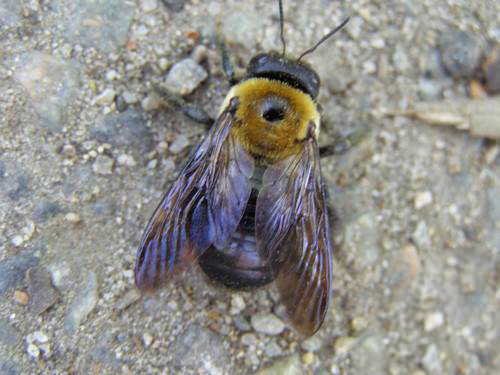Corporate Office:
20 Corporate Park Drive, Suite 150
Pembroke MA 02359
Cambridge, MA Office:
2534 Massachusetts Ave,
Cambridge, MA 02140
May 15, 2025

If you've noticed large, buzzing bees hovering around your porch, deck, or wooden siding, you might be dealing with carpenter bees. While these bees may look harmless — and even resemble bumblebees — they can quietly cause serious structural damage to your home over time.
At Secured Environments Pest and Wildlife Services, we’ve seen firsthand how quickly a small carpenter bee issue can turn into a costly repair job. Let’s break down why carpenter bees are drawn to your property — and what you can do to stop them.
Carpenter bees aren’t eating the wood around your house — they’re tunneling into it to create nesting galleries for their young. Here’s what makes your home so attractive:
Carpenter bees prefer soft, bare wood that’s easy to bore into. If your soffits, railings, or siding are untreated or aging, you’re practically rolling out a welcome mat.
They like dry, sheltered wood where the entrance holes are protected from rain. That’s why they often appear near:
Carpenter bees will return to the same area year after year if it’s not treated or sealed — and they’ll expand their tunnel systems each season.
While carpenter bees are important pollinators, you don’t want them drilling holes in your home. Here's how to deter them effectively and safely:
Bees prefer bare wood, so a coat of paint or a thick stain can make your home less appealing. Pay extra attention to:
Don’t give them a place to move in! Use caulk, wood filler, or plugs to seal old holes — but only after you’re sure no bees are inside. (If they are, we can help safely remove them.)
Some homeowners have success with carpenter bee traps, aluminum flashing, or even fake wasp nests (carpenter bees are territorial). While not foolproof, they can help reduce activity.
At Secured Environments, we use targeted, eco-conscious treatments that eliminate active infestations and deter future ones — without harming pollinators unnecessarily. We also inspect for hidden galleries that DIY methods often miss.
Don’t Let Carpenter Bees Turn Your Home Into a Nesting Ground
If you’re hearing buzzing in your eaves or spotting small, round holes in your woodwork, it’s time to take action. The sooner you address carpenter bees, the less damage they’ll cause — and the easier they are to manage.
Let the pros at Secured Environments Pest and Wildlife Services inspect your home, remove infestations, and help you safeguard your structure for good.